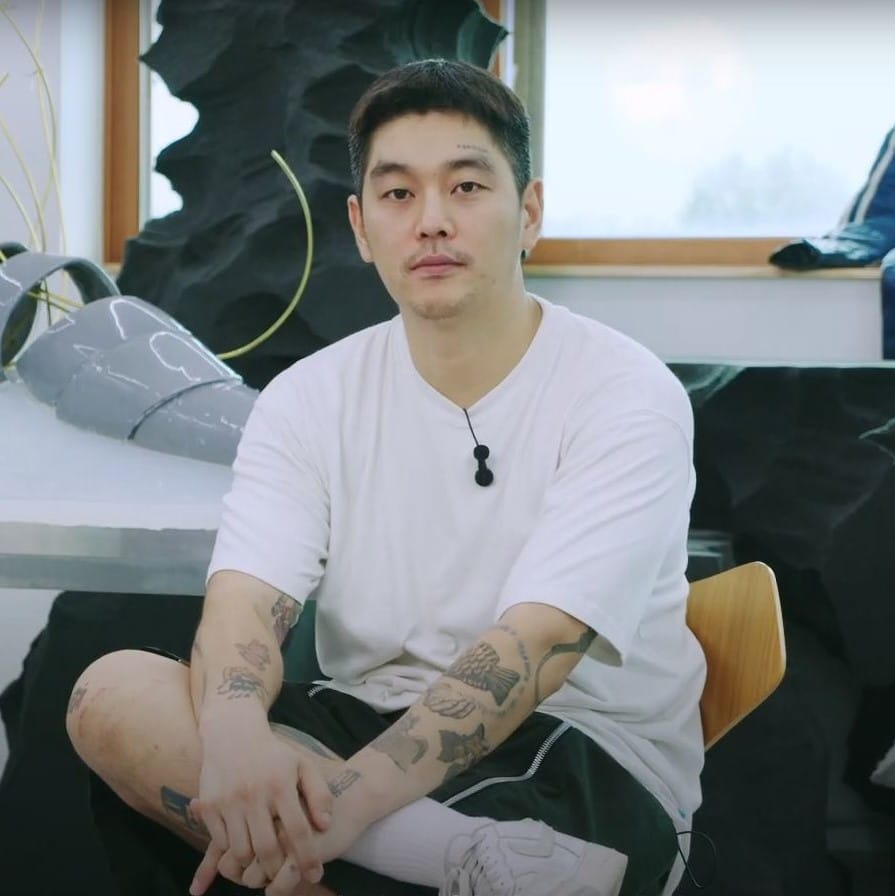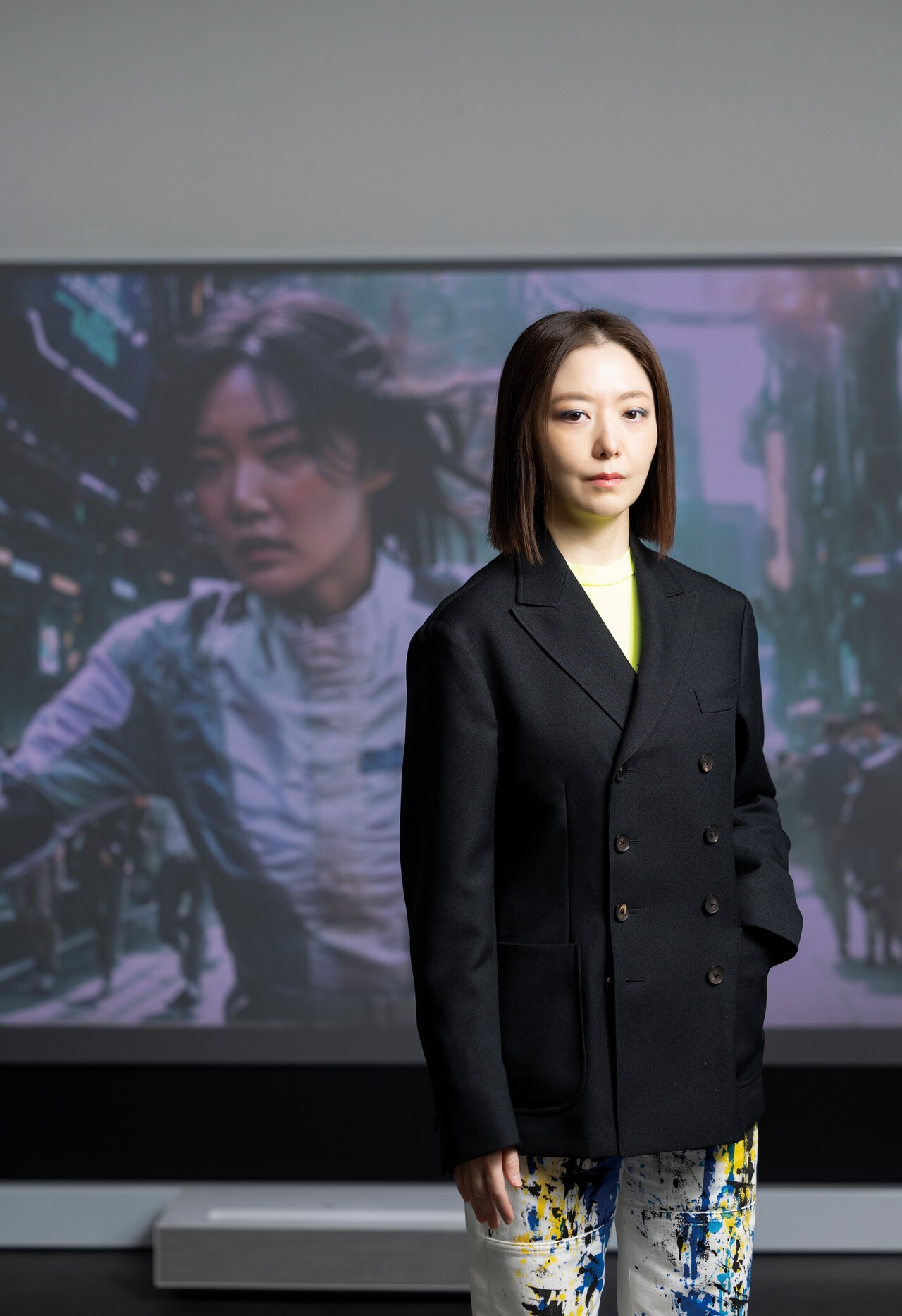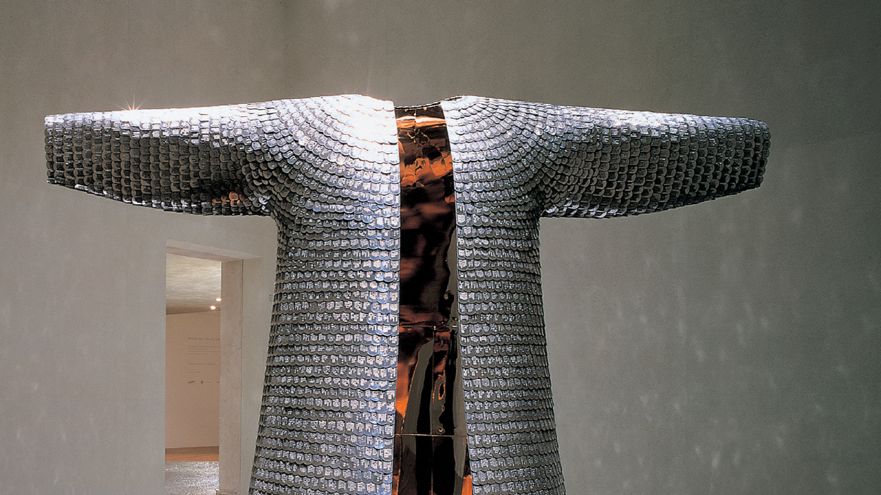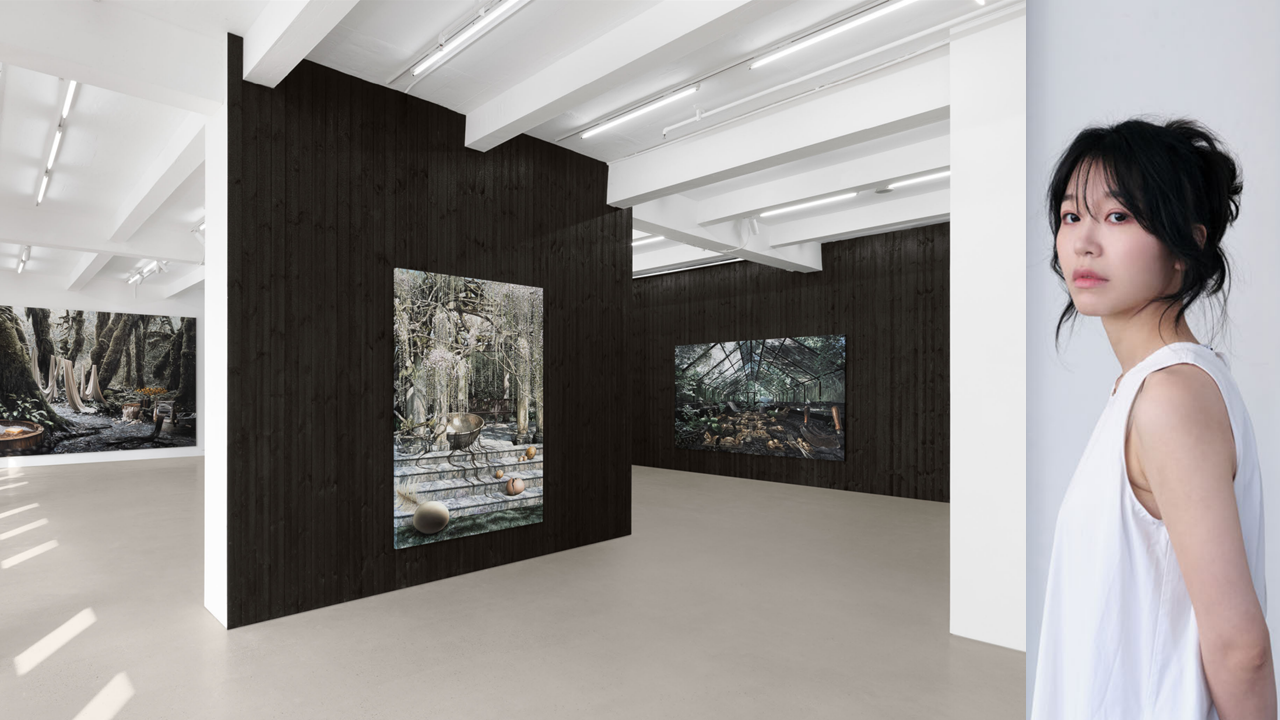Born in Korea and currently based in Los Angeles, Kang Seung Lee attempts to offer an alternative view to mainstream history.
Particularly focusing on retelling the marginalized narratives of queer figures and LGBTQ communities in art history, Lee performs in-depth research and uses various forms in creating his works,
such as labor-intensive graphite drawings; appropriated archival materials including images, video footages, and texts; embroidery works with golden threads; and other works made with materials such as plants, Korean traditional paper (hanji), and hemp cloth.

Kang Seung Lee. Photo by The Artro. © Kang Seung Lee
Some of Kang Seung Lee’s works are currently on view in New York and Seoul.
At New York’s New Museum, a number of Lee’s artworks, including graphite drawings and embroidery works, are on view in the museum’s fifth triennial, Soft Water Hard Stone, through January 23, 2022.
 Installation view of "Kang Seung Lee: Briefly Gorgeous," Gallery Hyundai, Seoul. Photo by Aproject Company.
Installation view of "Kang Seung Lee: Briefly Gorgeous," Gallery Hyundai, Seoul. Photo by Aproject Company.Two of Lee’s detail-oriented graphite drawings depict enlarged pebbles, each collected from two different sites: Prospect Cottage in England and Tapgol Park in Korea.
The two sites were important places to two gay rights activists: Prospect Cottage is the former home of English film director, stage designer, and gay rights activist Derek Jarman (1942–1994), and Tapgol Park is a site where Korean gay rights activist Joonsoo Oh (1964–1998) campaigned for human rights during his lifetime.
 Installation view of "Kang Seung Lee: Briefly Gorgeous," Gallery Hyundai, Seoul. Photo by Aproject Company.
Installation view of "Kang Seung Lee: Briefly Gorgeous," Gallery Hyundai, Seoul. Photo by Aproject Company.Meanwhile, in Seoul, Lee’s works are featured at Gallery Hyundai through December 31. The solo exhibition Briefly Gorgeous showcases 40 new works that reflect the varied history of the LGBTQ community around the world.
One of Lee’s works is a graphite portrait of Tseng Kwong Chi. While its surrounding is expressed in detail, the central figure is overshadowed with blurry clouds.
Tseng Kwong Chi, a Hong Kong-born American photographer, was an active artist in New York in the 1980s, but passed away from HIV/AIDS-related illnesses.
Lee also recreated a poster featuring a photo taken in 1980 by Tseng Kwong Chi of Shawn McQuate, an artist and choreographer who survived AIDS.
The arrival of the HIV/AIDS epidemic in the 1980s and 1990s has brought a surge of fear from the public and condemnation against of the LGBTQ community. This led to a major turning point in the LGBTQ rights history and the art world.
By bringing these personal histories to the surface, Lee attempts to emphasize the existence and impact of these historically marginalized figures as well as to offer a new viewpoint to the biased perspective of history.

Kang Seung Lee. By Melissanthi Saliba, CalArts Blog.
Kang Seung Lee’s works were reviewed by notable art critics at Art in America, Art Asia Pacific, and The New York Times. He was also selected as one of “16 Rising Artists of the Asian Diaspora in the United States” by Artsy.
 New Museum. Photo by Dean Kaufman. ©New Museum.
New Museum. Photo by Dean Kaufman. ©New Museum.*The New Museum, established in 1977, was the first contemporary art museum to open in New York City since the Second World War. It is known for being a non-collecting museum dedicated to presenting the art and ideas of our time. The New Museum has been holding triennials every three years since 2009 to introduce young artists who have played a major role in leading the contemporary art world.
*Gallery Hyundai was established in 1970, making it one of the oldest art galleries in Korea. It was also the first gallery to discover the Korean modern master Park Soo Keun and present his works to the Korean art scene. The gallery was also the first to introduce numbers of Korean-born artists based overseas, such as Lee Ungno, Kim Tschang-Yeul, and Nam June Paik to the local art scene.



























